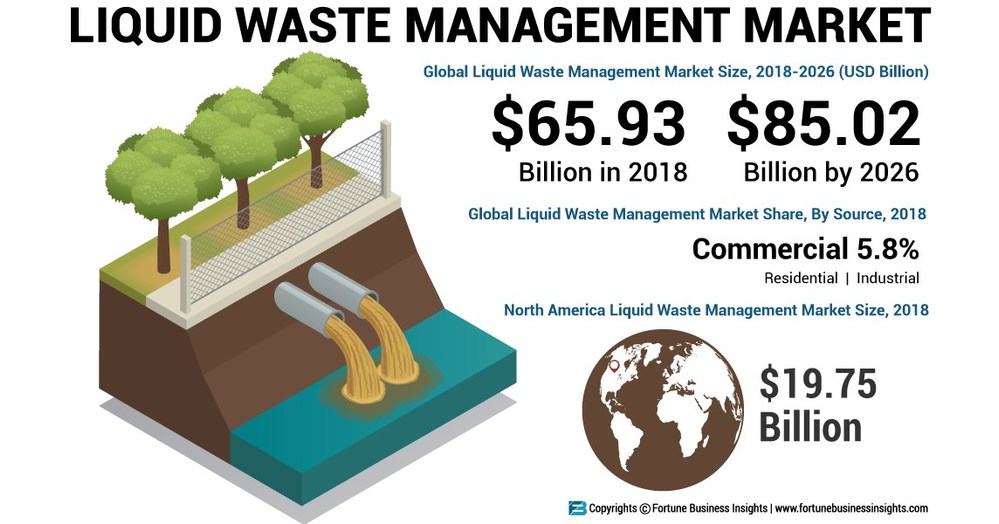Facts About Reclaim Waste Revealed
Unknown Facts About Reclaim Waste
Table of Contents7 Easy Facts About Reclaim Waste ShownThe Best Guide To Reclaim WasteThe Greatest Guide To Reclaim WasteIndicators on Reclaim Waste You Need To Know9 Easy Facts About Reclaim Waste Described
Domestic sewer waste refers to the waste and products from a residential septic storage tank. The proper administration and disposal of domestic sewer waste require liquid waste to be transferred to a sewer therapy plant where the proper techniques and equipment are applied to cleanse and dispose of waste.
Business waste frequently consists of prospective threats, such as flammable materials or a combination of liquid and strong waste products, and requires an advanced and comprehensive disposal procedure. The disposal of business waste generally includes the purification of waste before transport to guarantee risk-free and correct disposal. Industrial waste is produced from by-products and runoff of industrial procedures and manufacturing.
This sort of waste can not use the exact same sewage management transportation or processes as septic or commercial liquids. The industrial waste administration procedure calls for the examination and screening of fluid waste prior to it undertakes the disposal procedure (liquid waste removal melbourne). Overflow waste is the liquid waste that comes from overflow and excess stormwater in extremely inhabited areas or cities
Drainage waste can trigger contamination and flooding if not handled appropriately. Discover much more concerning sewage system cleansing and waste administration. Making sure correct waste administration can stop disasters and reduce ecological injury. Both people in property settings and professionals in commercial or manufacturing markets can take advantage of understanding the procedures and guidelines of fluid waste monitoring.
Reclaim Waste for Dummies
Get in touch with PROS Solutions today to find out about our waste monitoring and disposal services and the appropriate ways to take care of the fluid waste you create.
(https://www.twitch.tv/reclaimwaste1/about)Do you recognize what takes place to your water when you end, flush the commode or drain the cleaning device? No? Well, it deserves understanding. This so-called 'wastewater' is not just an important resource yet, after treatment, will certainly be released to our land, waterways or the ocean. Utilized water from toilets, showers, bathrooms, kitchen sinks, washings and industrial processes is called wastewater.

water utilized to cool down equipment or tidy plant and tools). Stormwater, a type of wastewater, is overflow that moves from agricultural and city areas such as roofs, parks, gardens, roadways, courses and seamless gutters into stormwater drains, after rainfall. Stormwater streams neglected straight to neighborhood creeks or rivers, at some point reaching the ocean.
Our Reclaim Waste Ideas
In Queensland, a lot of wastewater is dealt with at sewage therapy plants. Wastewater is transferred from domestic or commercial sites through a system of sewers and pump terminals, known as sewerage reticulation, to a sewer therapy plant.
The Department of Natural Resources suggests regional governments regarding managing, operating and preserving sewerage systems and therapy plants. In unsewered locations, regional governments may need owners to set up individual or home sewage therapy systems to deal with domestic wastewater from toilets, kitchens, restrooms and laundries. The Department of Natural Resources authorizes making use of home systems when they are shown to be effective.
Most stormwater obtains no therapy. In some new subdivisions, therapy of some stormwater to eliminate trash, sand and crushed rock has begun using gross contaminant traps. Wastewater therapy takes place in four phases: Removes strong matter. Bigger solids, such as plastics and other objects mistakenly discharged to sewage systems, are eliminated when wastewater is passed through displays.
Wastewater then streams right into huge storage tanks where solids clear up and are eliminated as sludge. Grease and residue are skimmed from the surface. Uses tiny living microorganisms called micro-organisms to break down and get rid of continuing to be dissolved wastes and great fragments. Micro-organisms and wastes are incorporated in the sludge. Removes nitrogen and phosphorus nutrients that might create algal blooms in our rivers and endanger marine life.
The smart Trick of Reclaim Waste That Nobody is Discussing
Nutrient removal is not readily available in any way sewage therapy plants because it requires expensive specialized devices. It is becoming more typical in Queensland. Clear fluid effluent produced after therapy might still consist of disease-causing micro-organisms. If this effluent is launched into rivers such as rivers or the sea, the micro-organisms will eventually die out.

A lot of wastewater flows right into the sewage system. Under the Act, local federal governments provide authorizations and licences for eco appropriate tasks (Periods) including wastewater launches that might have a regional influence.
Getting My Reclaim Waste To Work
Tracking supplies factual information regarding water high quality and can verify that licence conditions are being met. The information gotten via surveillance gives the basis for making water top quality decisions.